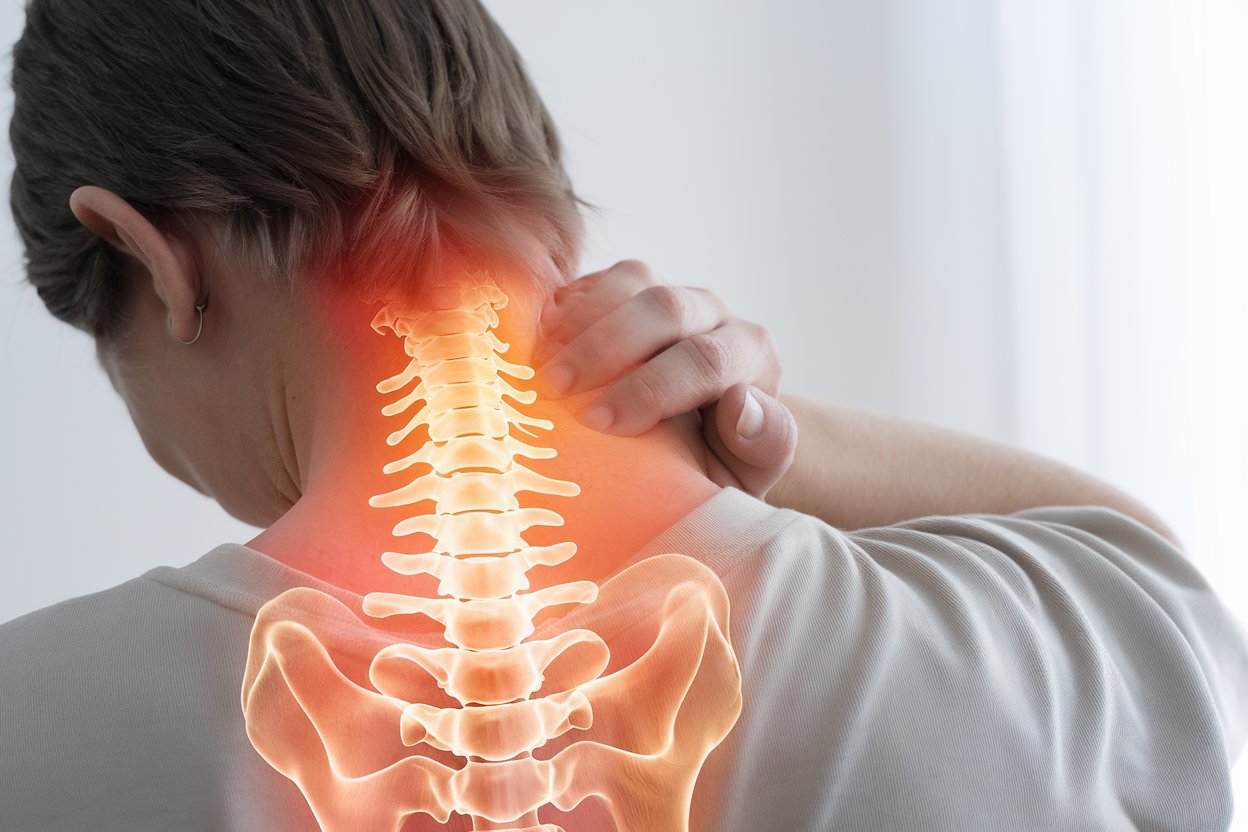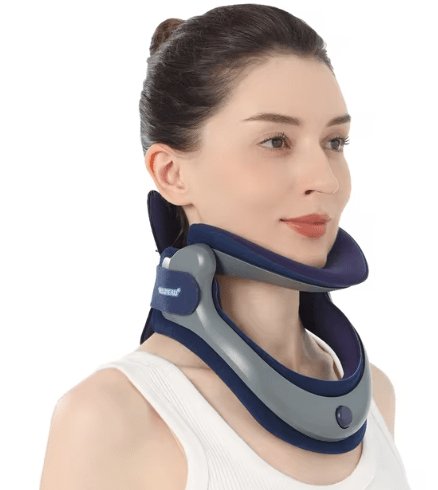Neck Injury: Symptoms, Causes, and Treatment

Neck injuries can be serious and significantly impact quality of life. This article reviews the most common symptoms, causes, and treatment options for neck injuries, with a particular focus on children.
What is a neck injury?
Neck injury refers to damage to the muscles, ligaments, discs and nerves of the neck, often caused by trauma, accidents or overuse. Common symptoms include pain, stiffness and reduced mobility. Early diagnosis and treatment are crucial for recovery. Read more about herniated discs in the neck to understand how disc damage can manifest itself.
Symptoms of neck injury
Common symptoms include:
- Pain and stiffness in the neck
- Limited mobility in the neck
- Headache, especially in the back of the head
- Dizziness and balance problems
- Fatigue and difficulty concentrating
- Numbness or tingling in the arms and hands
Neck injury symptoms can vary depending on the extent and type of injury. In acute neck injuries, the patient may experience immediate pain and reduced mobility. In other cases, symptoms may develop gradually over hours or days after the accident. Neck injury symptoms in children often include the child holding the neck in an unnatural position, complaining of pain when moving, or showing irritability.
In more serious neck injuries, neurological symptoms may also occur, which may include altered sensation in the arms and hands, muscle weakness, or in some cases even an impact on balance and coordination. Signs of serious neck injury, especially in children, should always be urgently investigated by healthcare professionals.
Causes of neck injury
Several factors can cause neck injuries:
- Whiplash injury
- Falls or sports-related injuries
- Overload or incorrect load
- Congenital malformations (in children)
- Trauma to the head and neck
Neck injuries after falls are one of the most common causes, especially in children who are active and exploring their surroundings. Falls can cause anything from mild muscle and ligament strains to more serious injuries such as fractures in the cervical spine.
Neck injuries in traffic accidents, especially rear-end collisions, can result in the well-known whiplash injury. In this type of trauma, the head is thrown rapidly back and forth, which can damage the soft tissues, joints and in some cases even nerve structures of the neck.
Sports-related accidents also pose an increased risk of neck injuries, particularly in contact sports where direct trauma to the neck and head can occur. In children and adolescents, these injuries can be of particular concern as their skeletons are still developing.
Diagnosis and treatment of neck injuries
A neck injury can occur after a fall, accident, or sudden movement that overloads the neck. Symptoms vary from mild pain and stiffness to numbness or dizziness. A correct diagnosis is crucial to ensure the right treatment and a safe recovery.
Physical examination
The doctor assesses mobility, pain level, and any neurological signs.
Advantage of NackKomforten™: Provides stability and support during rest and activity.
X-ray or MRI
Imaging diagnostics are used to detect fractures, soft tissue injuries, or nerve damage.
Advantage of NackKomforten™: Prevents further injury by stabilizing the neck area.
Neurological assessment
If nerve damage is suspected, sensation, reflexes, and muscle strength are examined.
Advantage of NackKomforten™: Promotes healing and recovery by reducing strain.
Blood test (if infection is suspected)
Used to rule out infection or underlying inflammatory conditions.
Advantages of NackKomforten™: Can be used both during rest and movement for continuous support.
Treatment and recovery
Treatment is tailored to the type and severity of the injury. In most cases, rehabilitation includes:
- Rest and pain relief
- Gradual return to movement
- Physical therapy and strengthening exercises
For more serious injuries, a neck brace or neck support can be used to provide stability during healing.
In children, it is particularly important to identify any fractures or instability early on to avoid complications.

How a neck brace can help with neck injuries in children
The neck collar from Komforten offers several benefits for children with neck injuries:
- Provides support and stability to the injured neck
- Limits mobility to promote healing
- Can be used both during activity and rest
- Customizable for optimal fit and comfort
- Helps prevent further damage during the healing process
For children who have suffered a neck injury, a neck brace can be particularly valuable as it limits movement, reducing the risk of the injury worsening. It also provides the child with a reminder to be gentle with their neck during the healing period.
The design of the collar is tailored to provide optimal support while remaining comfortable to wear for extended periods of time. This is especially important for children, who may not always understand the importance of limiting their mobility after an injury.
Buy nowConclusion
Neck injuries can be particularly worrisome when they affect children. Early diagnosis and appropriate treatment are crucial for a good prognosis. The use of supportive devices such as a cervical collar, in combination with other treatment methods, can contribute to an effective recovery. It is important to consult a doctor for a proper diagnosis and individual treatment plan, especially in the case of children.
Knowing the signs of a back or neck injury is important for parents and caregivers. Recognizing early symptoms and seeking immediate care can help prevent more serious complications. In most cases, neck injuries have a good prognosis when treated properly, and the patient's symptoms gradually improve over time.
Frequently Asked Questions (FAQ)
How long should a child wear a neck brace after a neck injury?
The duration of use varies depending on the severity of the injury. Follow your doctor's recommendations carefully.
Can a child with a neck injury go to school?
It depends on the extent of the injury. Consult with your doctor about when it is safe to return to school and what adjustments may be needed.
How can I tell if my child's neck pain is serious?
Seek immediate medical attention if the child has severe pain, numbness, weakness in the arms or hands, or if symptoms worsen over time.
Can physical activity help with neck injuries in children?
Light activity and specific exercises can often be beneficial, but should always be done under the supervision of a physical therapist or doctor.
How can I prevent neck injuries in my child?
Encourage good posture, safe sports practice, and use appropriate safety equipment during activities such as cycling or contact sports.

